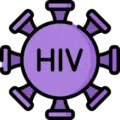Author(s)
Amy St. Amand, PharmD, BCPS
Christine Borowy, PharmD, BCPS
Reviewed By
Joyce Yu-Chia Lee, Pharm.D., BCPS, BCACP
Daniel Longyhore, Pharm.D., BCACP
Kimmy Nguyen, Pharm.D.
The Problem
Imagine you are seeing a new patient in your clinic who is a 65-year-old male with no history of heart attack, stroke, or peripheral artery disease. He wants your advice on whether or not he should be taking low-dose aspirin. Daily low-dose aspirin has long been considered a “wonder drug” for its cardioprotective effects, particularly in patients with pre-existing cardiovascular and cerebrovascular disease; however, despite decades of research, the use of aspirin to prevent a first event is less certain.
What’s Known
In 2016, The United States Preventive Services Task Force (USPSTF) updated recommendations regarding the use of aspirin for the primary prevention of cardiovascular (CV) events. The latest USPSTF recommendations downgrade the level of evidence and constrict the recommended age groups when compared to the 2009 recommendations.1 See Table 1.
Table 1. Summary of USPSTF Recommendations 2009-2016
|
2009 |
20161 |
|
Men Age 45-79: Recommend use when potential benefit due to reduction in MI outweighs the potential harm (Grade A) Women Age 55-79: Recommend use when the potential benefit due to reduction in ischemic stroke outweighs the potential harm (Grade A) |
Adults 50-59 with a 10-year CVD risk of 10% or greater: Recommend aspirin for prevention of cardiovascular disease if patient is not at increased risk of bleeding and has a life expectancy of at least 10 years (Grade B) Adults 60-69 with a 10-year CVD risk of 10% or greater: Decision to initiate aspirin therapy should be individualized (Grade C) |
What drove this shift? In 2014, the Food and Drug Administration (FDA) responded to a citizen petition from Bayer Pharmaceuticals requesting the labeled indications for low dose aspirin be updated to include primary prevention. The FDA concluded that the evidence from six trials looking at aspirin for primary prevention conducted from 1988-2005 “fail[ed] to establish that aspirin reduces the risk of primary myocardial infarction (MI) in patients with a coronary heart disease (CHD) risk of 10% or more for over 10 years.”2 Previous randomized controlled trials of aspirin for primary prevention have been summarized elsewhere.3 In the majority of studies, the results were not statistically significant.
What’s New
The Aspirin to Reduce Risk of Initial Vascular Events (ARRIVE) study was a multicenter, randomized, double-blind, placebo-controlled trial that attempted to clarify the role of aspirin for the primary prevention of cardiovascular events.4 Investigators enrolled 12,546 patients deemed to have a moderate cardiovascular risk based an estimated 10-year atherosclerotic risk of 10-20%. Patients were randomly assigned to receive either enteric-coated aspirin 100 mg daily or a placebo and were followed for a mean of 60 months; however, the study duration was extended to 72 months due to lower-than-anticipated event rates. Inclusion and exclusion criteria are detailed in Table 2.
Table 2. Inclusion and Exclusion Criteria
|
Inclusion Criteria |
Exclusion Criteria |
|
Males 55 years and older with 2-4 risk factors Females 60 year and older with 3 or more risk factors Risk Factors:
|
History of vascular event (stroke, myocardial infarction) or vascular intervention (e.g. stent) Diabetes mellitus Relevant arrhythmias Congestive Heart Failure Required antiplatelet therapy At high risk of gastrointestinal and other bleeding:
|
The primary efficacy endpoint of this trial was originally a composite of time to first occurrence of cardiovascular death, myocardial infarction, and stroke; however, due to a lower-than-expected event rate, the composite endpoint was updated mid-trial to include unstable angina and transient ischemic attack as well. Secondary endpoints included time to individual components of the primary outcome as well as time to and incidence of all-cause mortality. For the safety analyses, bleeding events were categorized based upon the GUSTO criteria (severe, moderate, mild). Investigators conducted both an intention-to-treat (ITT) and per-protocol (PP) analysis. The per-protocol analysis included patients who self-reported at least 60% adherence to their assigned treatment. The majority of patients were white males with an average 10-year ASCVD risk score of approximately 17%; characteristics were well-balanced between groups.4 See Table 3.
Table 3. Baseline Characteristics
|
Characteristic |
Aspirin |
Placebo |
|
Sex: Male |
70.5% |
70.4% |
|
Race: White |
97.8% |
97.9% |
|
Current smoker |
28.8% |
28.5% |
|
Mean body-mass index (BMI) |
28.3 |
28.5 |
|
High LDL |
44.3% |
45.7% |
|
Low HDL |
13.7% |
13.9% |
|
High systolic blood pressure |
62.5% |
62.9% |
|
Taking Antihypertensive Medications |
64.4% |
65.3% |
|
Mean estimate ACC/AHA 10-year ASCVD risk score |
17.3% |
17.4% |
Both the ITT and PP analyses failed to show a significant difference in the primary composite outcome between aspirin (4.29%) vs. placebo (4.48%) [HR 0.96 [0.81-1.13]; p = 0.6038 in ITT; HR 0.81 [0.64-1.02]; p = 0.0756 in PP). All secondary analyses were nonsignificant in the ITT population. The only outcomes significantly different between groups were myocardial infarction (0.53 [0.36-0.79]; p = 0.0014; NNT = 117) and non-fatal myocardial infarction (0.55 [0.36-0.84]; p = 0.0056; NNT = 145) in the per-protocol population. Gastrointestinal bleeding rates were low (less than 1.0%) and classified as mild in most cases but occurred twice as often in the aspirin group with 61 GI bleeds vs. 29 in placebo group (HR 2.11 [1.36-3.28]; p= 0.0007).
Critical Appraisal
Despite a robust study design and large study enrollment, there are several limitations to consider when analyzing and interpreting the results of ARRIVE. The majority of patients were white males from Western Europe and North America which limits its external validity. While study participants are representative of patients within the Veterans Health Administration, it does not represent the patient population in most ambulatory care practices in the United States. In addition, by excluding patients with diabetes, the study lacks generalizability to a very important patient population; however, another recently published ASECND trial also failed to demonstrate a clear benefit from aspirin for the primary prevention of CV events in patients with diabetes.5 For more information about the ASCEND study, please read the iForumRx commentary entitled Aspirin for the Primary Prevention of CV Events in Diabetes – Is the Evidence ASCENDing?
The ARRIVE study underscores the challenges of conducting pragmatic primary prevention trials in the modern era where multidisciplinary teams aggressively manage multiple cardiovascular risk factors such as smoking cessation, hypertension, dyslipidemia, glycemia, and weight. As we do a better job of managing risk, the benefits of aspirin dwindle. Other primary prevention strategies targeting specific modifiable risk factors appear to be more impactful. Statin therapy, for example, for primary prevention reduces the risk of major cardiovascular events by 25% for every 1 mmol (18 mg/dL) decrease in low-density lipoprotein (LDL).6 Smoking cessation reduces the risk of a stroke to the level of a non-smoker within 5-15 years.7
The low event rate in the ARRIVE trial is quite notable and perhaps reflects our modern-day management of CV risk. Investigators initially projected a 13.4% event rate in the placebo group and an 11.4% event rate in the aspirin group (for a total 1488 projected events). But the actual event rates in the ITT population were less than 4.5% in both groups (only 550 observed events) even after a revamped primary outcome to include unstable angina and transient ischemic attack. The very low event rates raise another important question: are we accurately estimating the atherosclerotic cardiovascular risk of our patients? The ACC/AHA ASCVD Risk Calculator has been in widespread use since the 2013 Lipid Guidelines. That risk calculator was develop using a “pooled cohort” which including data from older studies, such as the Framingham Heart Study. Thus, we may be overestimating CV risk by as much as 20%, potentially leading to overtreatment.8 The results of ARRIVE suggest that patients at moderate risk of cardiovascular events are in fact at lower risk than previously anticipated.
The Bottom Line
The role of aspirin for the secondary prevention of CV events is well-established; however, in moderate-risk patients with no history of cardiovascular or cerebrovascular disease, the benefits of aspirin therapy are minimal – even when the mean estimate risk was greater than 17% over 10-years. Moreover, aspirin therapy doubles the risk of gastrointestinal bleeding. Given the totality of the evidence, we would not initiate aspirin therapy for the primary prevention of CV events in most patients. Instead, we should be focusing on modifiable risk factors such as smoking cessation, weight, blood pressure, and LDL-C. For those patients who are already on low-dose aspirin, clinicians should revisit the conversation about risks and benefits and come to a mutual decision.
The Key Points
- Aspirin does not provide a net benefit for the primary prevention of cardiovascular events in patients with an estimated ASCVD risk of less than 20%
- Current calculators likely overestimate the risk of cardiovascular disease perhaps due to optimization of modern medical therapy with statins and antihypertensive medications
- For primary prevention of CV events, reduction of risk through smoking cessation, weight management, blood pressure control, and LDL reduction provide greater cardiovascular protection than aspirin therapy.
1. Bibbins-Domingo K. Aspirin use for the primary prevention of cardiovascular disease and colorectal cancer. U.S. Preventive Services Task Force recommendation statement. Ann Intern Med 2016;164:836-45.
2. US Food and Drug Administration. Citizen Petition Denial Response from FDA to Bayer Healthcare LLC. Docket ID: FDA-1977-N0018. 2014. www.regulations.gov/#!documentDetail;D=FDA-1977-N-0018-0101. Accessed October 10, 2018.
3. Miedema MD, Huguelet J, Virani S. Why don’t we know who should take an aspirin to prevent cardiovascular disease? Expert Analysis. American College of Cardiology. Available at https://www.acc.org. Accessed October 10, 2018.
4. Gaziano JM, Brotons C, Coppolecchia R, et al. Use of aspirin to reduce risk of initial vascular events in patients at moderate risk of cardiovascular disease (ARRIVE): a randomized, double-blind, placebo-controlled trial. Lancet2018;392:1036-46.
5. ASCEND Study Collaborative Group. Effects of aspirin for primary prevention in persons with diabetes mellitus. N Engl J Med. 2018;Epub ahead of print. DOI: 10.1056/NEJMoa1804988
6. Collins R, Reith C, Emberson J, et al. Interpretation of the evidence for the efficacy and safety of statin therapy Lancet 2016;388:2532-61.
7. World Health Organization. Tobacco Free Initiative. Fact sheet about health benefits of smoking cessation. Available http://www.who.int/tobacco/quitting/benefits/en/. Accessed November 18, 2018.
8. Yadlowsky S, Haward RA, Sussman JB, et al. Clinical implications of revised pooled cohort equations for estimating atherosclerotic cardiovascular disease risk. Ann Intern Med2018;169:20-29.




 iForumRx.org is a web-based community of practice designed to inform ambulatory care pharmacy specialists, pharmacy residents, and student pharmacists about high-quality, practice-changing evidence.
iForumRx.org is a web-based community of practice designed to inform ambulatory care pharmacy specialists, pharmacy residents, and student pharmacists about high-quality, practice-changing evidence.